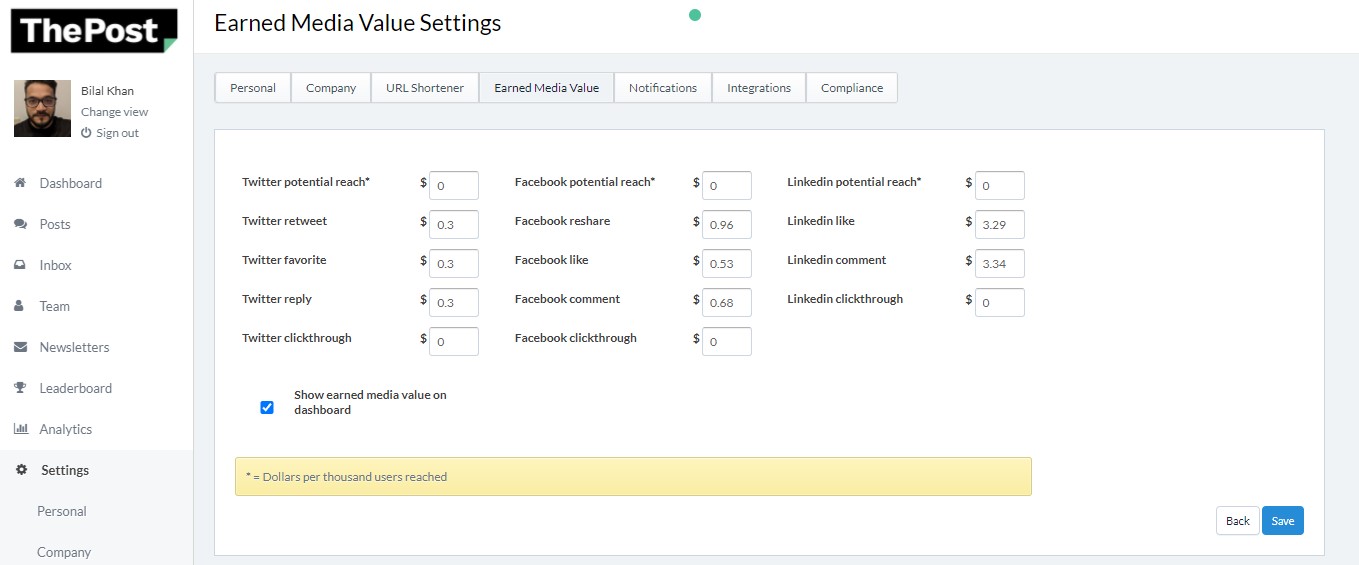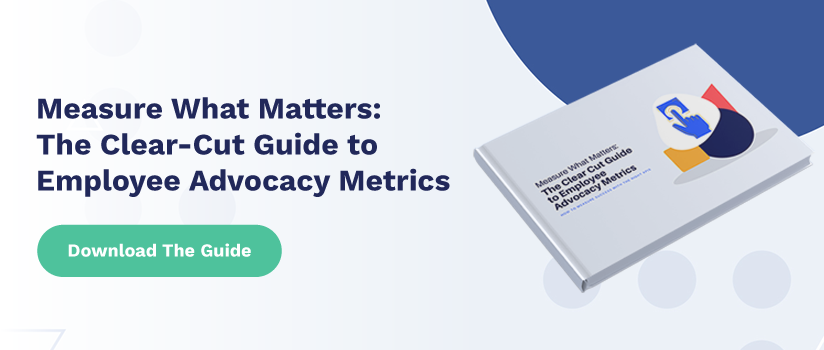Note: We updated this article on November 02, 2021 to incorporate new insights and information.
For social media managers and PR pros, attributing a dollar value to program success is vital to winning over executives and other key stakeholders. But doing so isn’t always straightforward, especially for newer initiatives like employee advocacy programs. One method is to use earned media value (EMV).
Measuring EMV isn’t hard, but it’s often seen as a soft metric. However, if you use it correctly, it can be a leading indicator of social media success and ROI. Here, we explore what EMV is, how to calculate it, it’s benefits and drawbacks, and more.
What is earned media value?

Earned media value is the monetary value of all exposure you gain on third-party sites or social media content through marketing and PR efforts. It puts a quantitative dollar amount on the engagement your company has won through these channels. The result is a number representing what you would have had to pay to get the same engagement through owned or paid branded channels.
How do you calculate earned media value?
There’s no one standardized way to calculate EMV. Different marketing teams and platforms will weigh key metrics differently. This is a reason why earned media value may not work as a standalone metric.

However, one way to measure EMV is to leverage existing hard data, such as:
- The average Cost Per Engagement (CPE) for paid social on each utilized network.
- The average Cost Per Impression (CPI) for paid social on each utilized network.
- The average Cost per Click (CPC) for paid social on each utilized network.
You can compare your averages with other marketing or PR departments to get a more accurate reading of your EMV as well.
Once you’ve determined it, your EMV tells you how much you would have paid for the exposure you got from unpaid avenues, such as employees’ personal posts.
Is earned media value a vanity metric?
Because EMV is calculated in different ways, it certainly has the potential to be a vanity metric. When used correctly, though, it plays a role in helping marketing teams determine the value of their employee advocacy programs, backlink campaigns, and other outreach efforts.
Perhaps most importantly, EMV informs teams of the value that these external, third-party posts truly have in an overall marketing plan. Earned media alone usually isn’t enough, and should be paired with a paid media plan for best results. It can, though, guide your paid methods and harness the power of often-overlooked marketing avenues, such as your employees.
How earned media value relates to share of voice
Share of voice refers to your brand’s percentage of the market in your industry compared to competitors. Website traffic, online mentions, and other data are all taken into account to measure share of voice.
EMV contributes to share of voice without costing you money. If your employees are posting about their work and your products, that’s additional mentions that companies without an employee advocacy plan won’t get. If you’re being lauded for great customer service, or if your customers are posting about their experience, that content will also increase your share of voice. When potential clients begin to research the industry, it’s your name they’ll see, not your competitors’.
Essentially, the greater your EMV is, the more you’re increasing your brand’s share of voice without spending any money.
Benefits and drawbacks of earned media value

No metric is perfect, especially one as contested as earned media value. EMV isn’t without its faults, despite playing an important role in quantifying ROI from earned media.
Benefits
The main benefit of measuring EMV is putting a dollar amount on the engagement you’re earning outside of paid campaigns and owned accounts. This can help social media, marketing, and PR teams better target the right audiences and encourage leadership to support campaigns based in earned media.
The support from these key decision-makers can be vital in making the most of an employee advocacy platform or plan—but we’ll dive into that below.
Drawbacks
The biggest drawback of using EMV as a key metric is that, due to the lack of consistency in calculating it, it can mean something slightly different in different places. It can get tricky to keep up with EMV manually if you have to create your own in-company value to calculate it.
Thankfully, platforms like PostBeyond take the guesswork out of the process and can keep the metric consistent with others that your company uses in decision-making comparisons.
How employee advocacy relates to earned media value

It’s no secret that we believe employee advocacy is a powerful technique. But many marketing teams need to convince their executive leadership of its power.
EMV puts the value of employee advocacy in a numerical, quantitative dollar amount that execs and decision makers can understand, since employees can amplify your marketing efforts like no one else can.
Once a team is convinced of the usefulness of employee advocacy, earned media value can help determine which approaches are working best—and which aren’t worth their time. The metric gives the marketing and social media teams continuous insight on how they’re doing and how they can alter their approach to best fit the company’s and audiences’ needs.
Final Thoughts
Earned media value isn’t a perfect metric. However, it can play an important role in evaluating how your company is doing on social media—especially if you’re still tweaking your approach to employee advocacy.
If you’re serious about making the most of social media, measuring EMV is a must.





